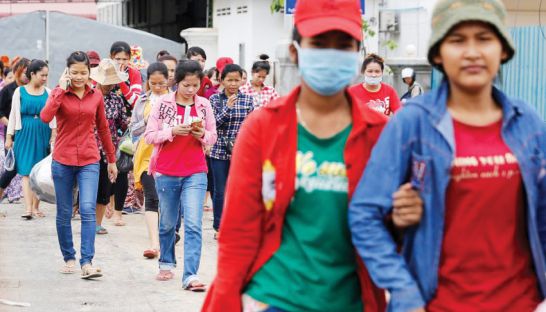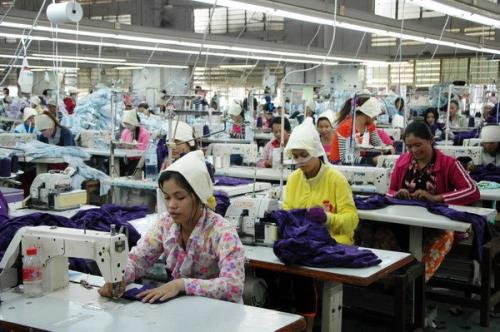Cambodia’s loss of LDC status will bring challenges: World Bank
Cambodia’s loss of LDC status will bring challenges: World Bank
As Cambodia continues its upward trajectory towards becoming a lower-middle-income country, it will face even greater challenges in reducing high levels of poverty as the Kingdom loses its preferential trade privileges and donor funding dries up, according to a new World Bank report.

The World Bank’s Systematic Country Diagnostic, presented yesterday in Phnom Penh, stated that while Cambodia has made large strides in reducing poverty over the last two decades, it cannot rely on the same agricultural and low-cost labour base to assist its reduction of poverty rates in the future.
“Cambodia’s eventual graduation from being a least-developed country (LDC) will bring a progressive decline in donor financing and an erosion of preferential trade treatment,” the report said. “At the same time, salaries are rising, and it will be increasingly difficult for Cambodia to keep exporting unprocessed rice and low-end garments.”
The report added that with commodity prices showing negative indicators, the scope of future agricultural gains will become further limited. Additionally, reliance on tourism and garment industries will be challenged as Cambodia’s competiveness weakens.
Miguel Eduardo Sanchez, senior country economist for the World Bank in Cambodia, said that the report was meant to look at the sweeping long-term challenges facing the Kingdom in the near-future and to help the government craft policies for sustainable and inclusive growth.
“Cambodia is one of the fastest growing economies in the world, and poverty reduction has been caused by the growth of services and exports in the tourism sector and garment sector,” he said, adding that the poverty rate declined from 47.8 percent in 2007 to 13.5 percent in 2014.
However, he added that nearly half of the population is still extremely vulnerable to negative economic shocks that could easily force it back into poverty.
“In that respect, Cambodia needs to set up social protections because Cambodians are susceptible to health shocks and climate shocks,” he said. “Cambodia has some of the highest out-of-pocket health care costs with people having to go to Thailand or Vietnam for treatment.”
The World Bank issued guidelines that could further reduce poverty which included reducing costs associated with starting a business, investing in education, and implementing a robust urban planning agenda. This year, the World Bank gave Cambodia a low ranking of 180 out of 189 countries in terms of ease of starting a business.
World Bank Country Manager for Cambodia Inguna Dobraja said that while the institution was committed to reducing poverty, the World Bank was looking where its investments would have the highest impact.
“At this point we are starting to design our medium-term partnership with Cambodia,” she said. “We are looking at a framework strategy for how either our investment, lending, or further analytical work can help.”
But, she said, it would be up to the government and other multilateral agencies to assist in implementing poverty-reducing policies.
Mey Kalyan, senior adviser to the Supreme National Economic Council, said that the country needs to be adequately prepared for higher competition and a lack of foreign aid as the country becomes wealthier. He added that while economic growth has reduced poverty, levels of income inequality have grown.
“Economic growth so far has reduced the poverty rate,” he said. “But at this speed of development, the fact is that lower income earners benefit more slowly while the rich benefit at a faster speed.”














